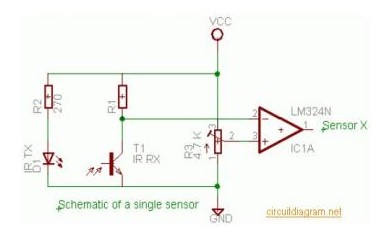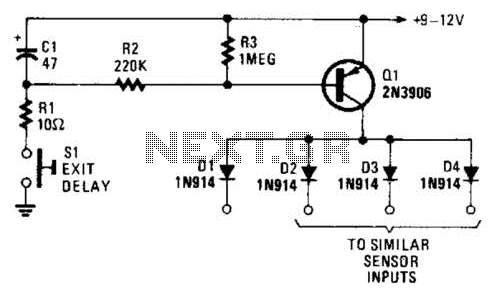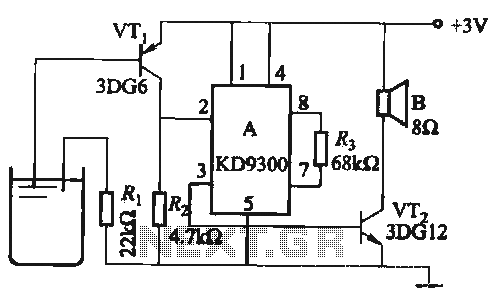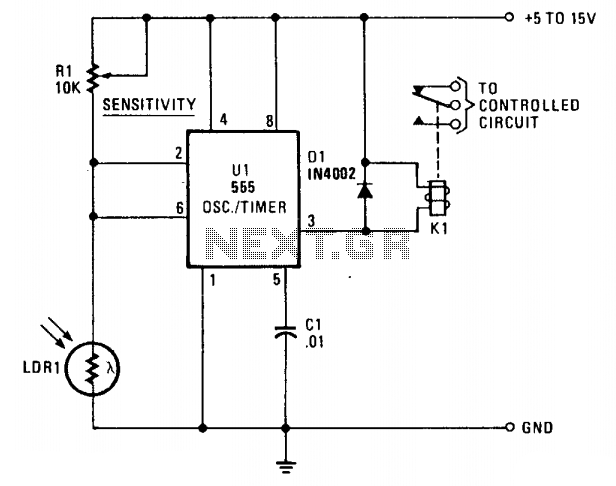
Alarm System for Entrance/Exit Gate
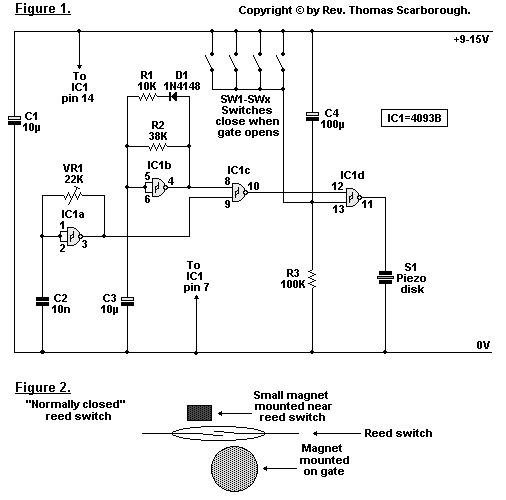
The circuit utilizes reed switches to create a gate alarm that is powered by a universal AC/DC power supply oscillator.
The design of this gate alarm circuit incorporates reed switches, which are electromechanical devices that operate based on the presence of a magnetic field. When a magnet approaches the reed switch, it causes the contacts within the switch to close, completing the circuit. This action can trigger an alarm or notification system, making it suitable for use in gate security applications.
The power supply for this circuit is a universal AC/DC power supply oscillator, which is capable of converting alternating current (AC) from the mains into direct current (DC) suitable for powering electronic components. This versatility allows the circuit to operate under various voltage and frequency conditions, making it adaptable to different geographical locations.
The oscillator component of the power supply is crucial for maintaining a stable voltage output, ensuring that the circuit functions reliably. In addition, it may include features such as voltage regulation and protection against overcurrent or short circuits, enhancing the safety and longevity of the circuit.
To implement this circuit, careful consideration must be given to the placement of the reed switches and the magnet to ensure optimal performance. The reed switches should be mounted in a way that they are activated only when the gate is opened or closed, preventing false alarms. Furthermore, the alarm system can be enhanced by integrating additional features, such as a delay timer or an indicator light, to provide visual feedback when the alarm is triggered.
Overall, this gate alarm circuit represents a practical application of reed switch technology in security systems, leveraging a universal power supply for versatility and reliability.The circuit employs the functions of reed switches to produce a gate alarm that is powered by a universal AC/DC power supply Oscillator an electronic ci.. 🔗 External reference
The design of this gate alarm circuit incorporates reed switches, which are electromechanical devices that operate based on the presence of a magnetic field. When a magnet approaches the reed switch, it causes the contacts within the switch to close, completing the circuit. This action can trigger an alarm or notification system, making it suitable for use in gate security applications.
The power supply for this circuit is a universal AC/DC power supply oscillator, which is capable of converting alternating current (AC) from the mains into direct current (DC) suitable for powering electronic components. This versatility allows the circuit to operate under various voltage and frequency conditions, making it adaptable to different geographical locations.
The oscillator component of the power supply is crucial for maintaining a stable voltage output, ensuring that the circuit functions reliably. In addition, it may include features such as voltage regulation and protection against overcurrent or short circuits, enhancing the safety and longevity of the circuit.
To implement this circuit, careful consideration must be given to the placement of the reed switches and the magnet to ensure optimal performance. The reed switches should be mounted in a way that they are activated only when the gate is opened or closed, preventing false alarms. Furthermore, the alarm system can be enhanced by integrating additional features, such as a delay timer or an indicator light, to provide visual feedback when the alarm is triggered.
Overall, this gate alarm circuit represents a practical application of reed switch technology in security systems, leveraging a universal power supply for versatility and reliability.The circuit employs the functions of reed switches to produce a gate alarm that is powered by a universal AC/DC power supply Oscillator an electronic ci.. 🔗 External reference
